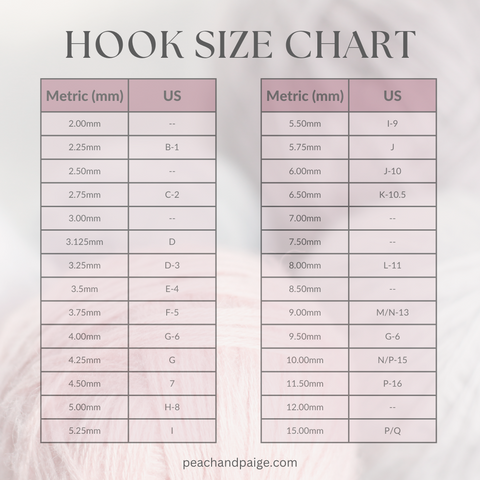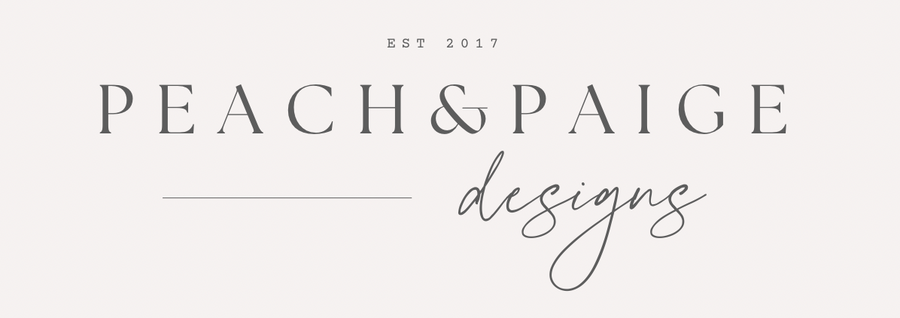
Choosing the Perfect Crochet Hook: A Comprehensive Guide
Ever since I introduced my new line of resin crochet hooks, I've received several emails from clients seeking advice on selecting the right crochet hook. That prompted me to put together this blog post, providing a complete overview of crochet hooks, including sizes, materials, tip designs, and handle considerations.
A crochet hook is undoubtably the most important tool in a crocheters arsenal. Opting for a high-quality hook tailored to your project not only improves your overall crocheting experience but also contributes to increased speed, comfort, accuracy, and neater work.
Size Matters: Deciphering Crochet Hook Sizes
Crochet hooks come in a huge variety of sizes – from the micro steel hooks that are less than 1mm wide, to huge hooks which can be a few cm across. The size hook you need is going to depend entirely on the project you are completing.
Hook sizes will either be written as a measurement – usually mm – or it may be written with a letter (more common in the US). Below is a size chart showing the different sizes and the corresponding letters;

Typically, patterns provide guidance on the recommended yarn and hook sizes. While yarn labels often indicate the standard hook size for that particular yarn, keep in mind that it serves as a mere guide. For amigurumi projects, consider a slightly smaller hook size than recommended to achieve a tight fabric. Conversely, loose, drapey tops may call for a larger hook size, creating a soft and flowy fabric.
As a rule of thumb, standard hook sizes for different yarns are as follows;

The chosen hook size also influences your tension. Gauge swatching before starting a project allows you to adjust your hook size to meet the desired measurements.
Materials: Exploring the Feel of Crochet Hooks
Crochet hook tips come in various materials, each offering a unique feel during crocheting and suiting a variety of budgets. Below are some of the most common materials you will come across.
Aluminum/Steel:
Among the most common and durable, these hooks provide a smooth and fast crocheting experience. High-quality options, like the Clover Amour, feature a brushed matte surface, eliminating potential squeakiness which occurs with cheaper varieties.
Plastic/Resin:
Lighter and warmer to the touch, these machine-made hooks are cheaper and suitable for beginners. However, the smaller sizes are more prone to snapping and less durable.
Wood/Bamboo:
Offering a lightweight and comfortable option, these hooks tend to get smoother over time. While bamboo hooks may bend with tight tension, wood hooks are less flexible and more prone to snapping.
Hook Tip Designs: Inline vs. Tapered
Two main styles of hook tips exist: Inline and Tapered.
 .
. 
Tapered Tip:
Brands like Boye and Clover as well as most generic hooks use tapered tips, featuring a gradual increase in width and a smoother, rounder head.
Inline Tip:
Inline tips are most commonly recognised as Susan Bates hooks, characterized by consistent width, a deeper, sharper hook groove, and a tip in line with the shaft.
While personal preference plays a role, some crocheters find each type has the following advantages:
Inline Hooks:
- Offer more consistent stitches
- Have a sharper head for tight stitches
- Provide better tension control
Tapered Hooks:
- Faster crocheting
- Are less likely to split yarn
- Are gentler on the wrist
Handle Designs: Adding Comfort and Style
The final consideration in selecting a crochet hook is the handle. Some hooks come with rubber or resin handles that improve grip and provide relief for hands and wrists.
Handle preferences vary, but those with a 'pencil grip' often find narrower handles, like my Peach&Paige Brook Handle, more comfortable.

A 'Brook' Style handle by Peach&Paige
So, while there is alot to consider it really comes down to personal preference. Experiment, try different hooks and styles to find what really works for you.
In my range of crochet hooks, you can choose from four handle designs—Brook, Bella, Trumpet, and Pike—paired with tip options from Clover Amour, Boye, Susan Bates, and Generic. Because, after all, why shouldn't your crochet hook be both functional and aesthetically pleasing?

